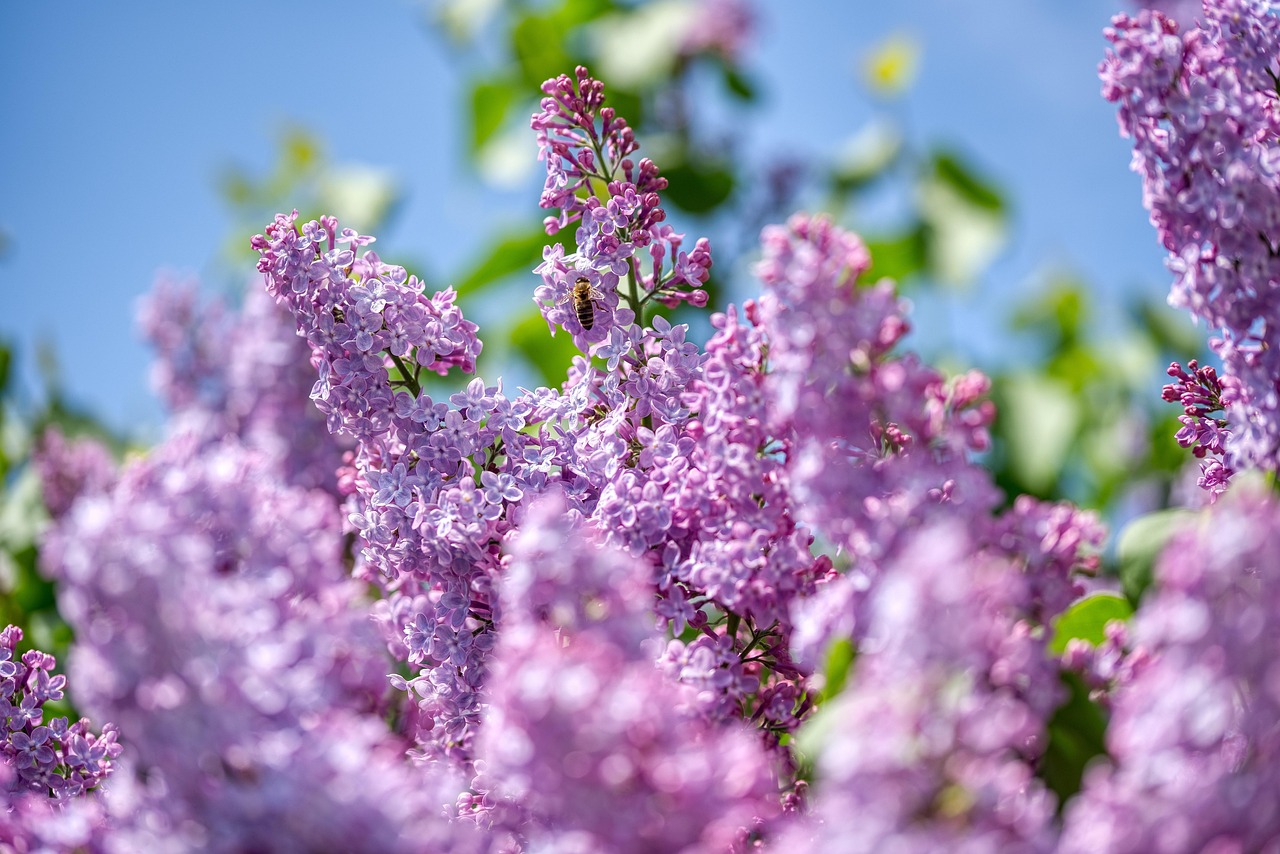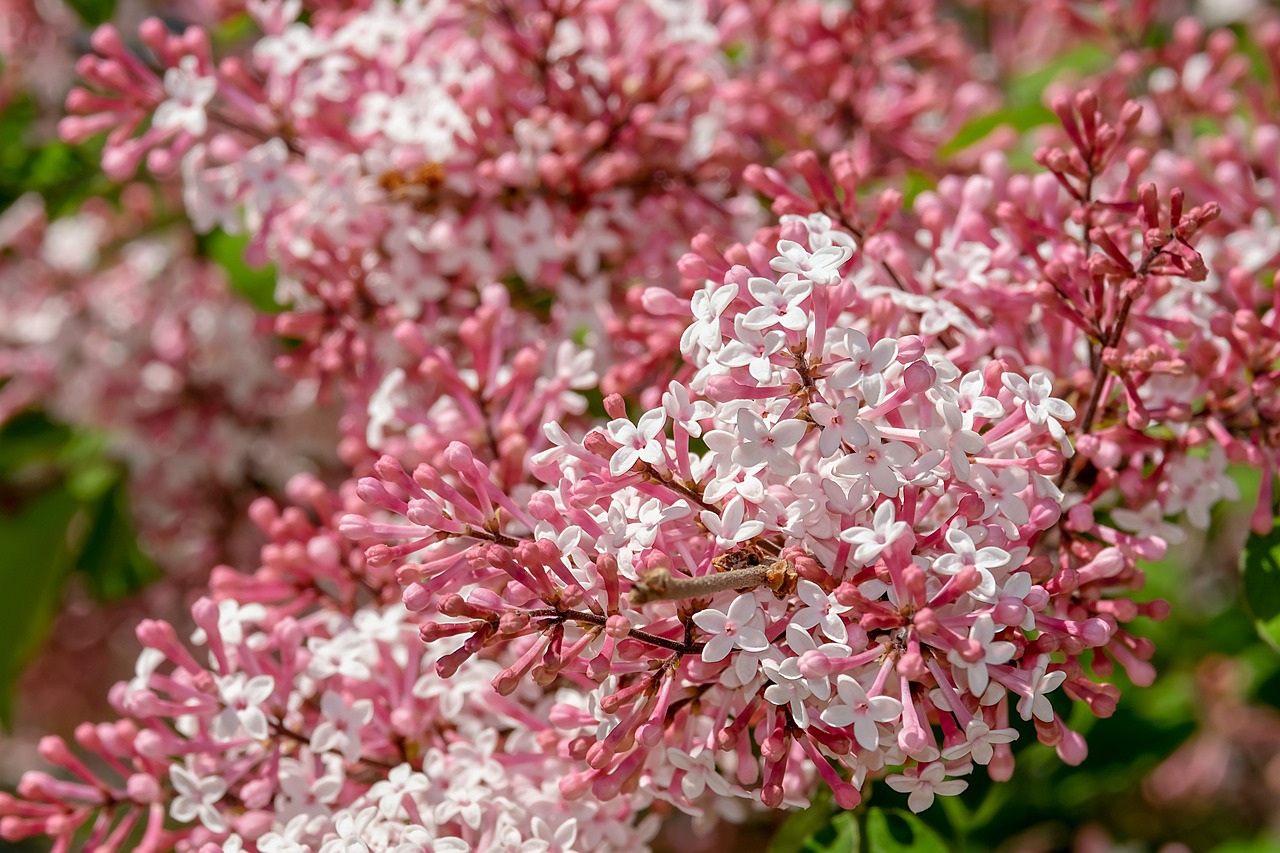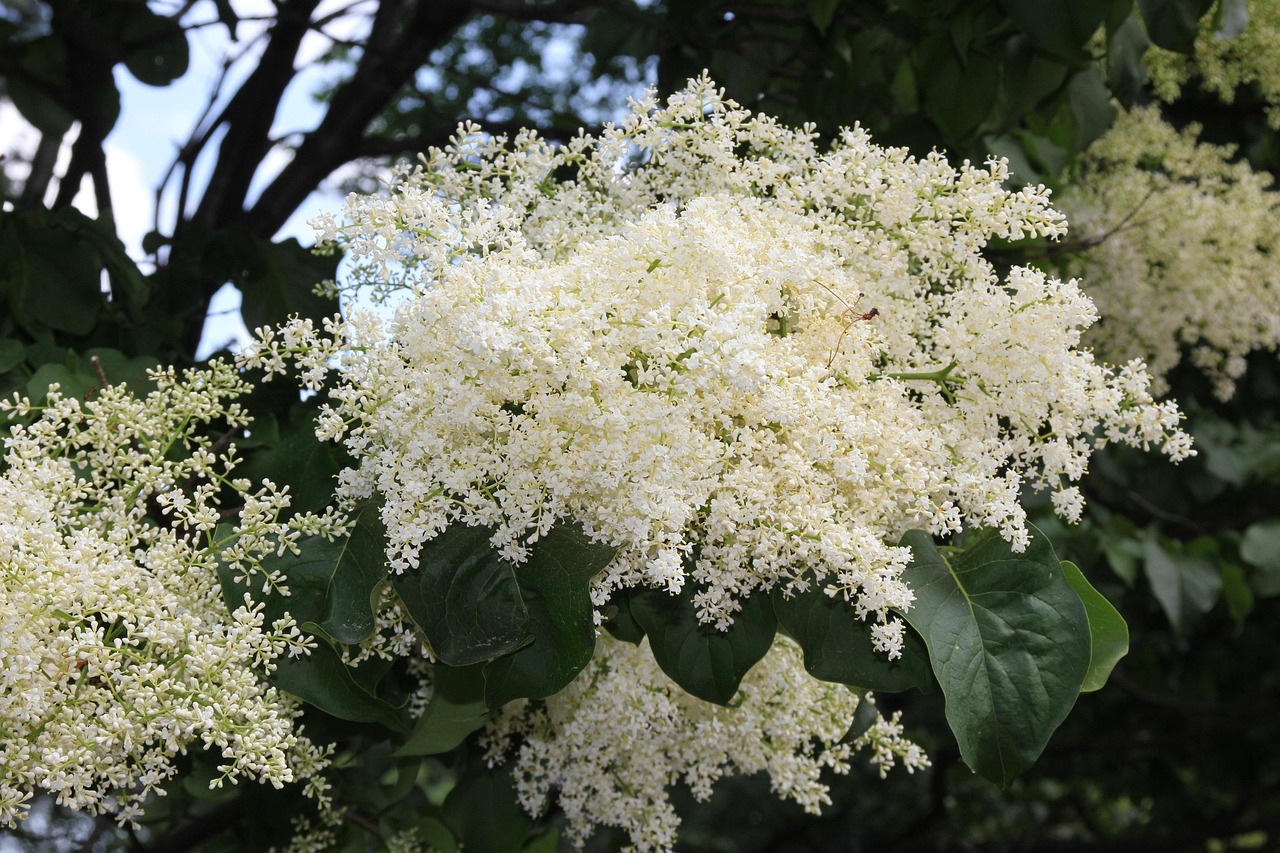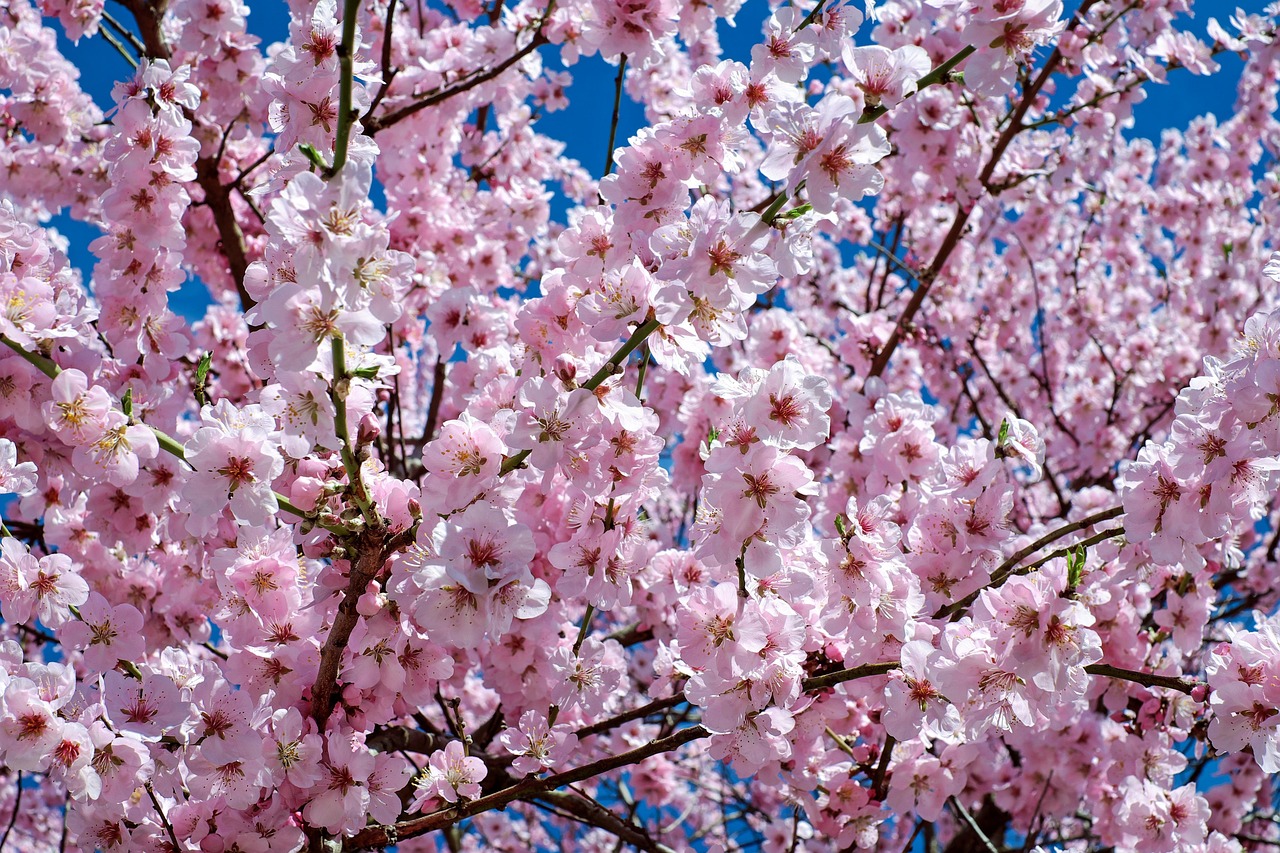The Japanese Lilac Tree (Syringa reticulata) typically grows at a moderate rate of about 12 to 24 inches per year. It begins to bloom in late spring, showcasing its fragrant white flowers which add beauty to landscapes.
Understanding the Japanese Lilac Tree
The Japanese Lilac Tree is a popular ornamental tree, cherished for its stunning flowers and attractive foliage. Native to Asia, particularly Japan and Korea, this tree is well suited for various climates and is often planted in parks, gardens, and along streets. Its resilience and adaptability make it a favorite among landscape designers.

This tree can reach heights of 20 to 30 feet, with a spread of 15 to 25 feet. The Japanese Lilac has a rounded crown that provides excellent shade. Its bark is smooth and brownish in color, adding visual interest even during the winter months when it is not in bloom.
Growth Rate of the Japanese Lilac Tree
The growth rate of the Japanese Lilac Tree is considered moderate. Factors that affect its growth include soil quality, sunlight exposure, and water availability. Typically, you can expect the tree to grow between 1 to 2 feet each year under optimal conditions. However, in poor soil or shaded areas, growth may be slower.
Here are some key factors influencing growth rates:

- Soil Quality: Well-drained loamy soil promotes faster growth.
- Sunlight: Full sun exposure encourages optimal growth rates.
- Water: Consistent watering, especially during dry spells, is crucial.
In general, Japanese Lilac Trees are not very demanding. They can thrive in a variety of soil types but prefer slightly acidic to neutral pH levels. Regular fertilization can also enhance their growth and overall health.
Flower Blooming of the Japanese Lilac Tree
The flowering period for the Japanese Lilac Tree typically occurs from late spring to early summer, usually around May to June. During this time, the tree produces large clusters of small, creamy white flowers that are not only visually appealing but also emit a sweet fragrance.
The blooming process is influenced by several factors:

- Temperature: Warmer temperatures can lead to earlier blooming.
- Sunlight: Adequate sunlight exposure promotes abundant flowering.
- Age of the Tree: Younger trees may take a few years to start blooming.
The flowers attract various pollinators, including bees and butterflies, making the Japanese Lilac Tree a valuable addition to any garden or landscape. After the blooming period, small seed pods appear, which can be left on the tree for added interest or removed if desired.
Optimal Care for Growth and Blooming
To ensure healthy growth and vibrant blooms, proper care is essential. Here are some tips for maintaining your Japanese Lilac Tree:
- Watering: Water deeply but infrequently to encourage deep root growth.
- Pruning: Prune after flowering to maintain shape and promote new growth.
- Pest Control: Keep an eye out for pests such as aphids and scale. Early intervention can prevent damage.
By following these care guidelines, you can enjoy a thriving Japanese Lilac Tree that will provide beauty and fragrance for years to come. Its moderate growth rate and stunning blooms make it an excellent choice for gardeners looking to enhance their outdoor spaces.
Common Varieties of the Japanese Lilac Tree
While the Japanese Lilac Tree is primarily known for its species, Syringa reticulata, there are several cultivars that offer unique characteristics. These varieties may differ in size, flower color, and growth habits. Understanding these options can help you choose the best fit for your landscape.

Popular Cultivars
- Syringa reticulata ‘Ivory Silk’: This cultivar is favored for its large, creamy white flowers and compact size, reaching about 15 to 20 feet tall. It has a rounded shape and is ideal for smaller gardens.
- Syringa reticulata ‘Summer Snow’: Known for its abundant blooms, this variety produces fragrant white flowers that appear in clusters. It typically grows 20 to 25 feet tall and is quite hardy.
- Syringa reticulata ‘Golden Spirit’: This unique cultivar features golden-yellow leaves that provide stunning contrast to the white flowers. It reaches a height of around 15 to 20 feet and is perfect for adding color to your garden.
Ideal Growing Conditions
To achieve optimal growth and flowering, it is essential to understand the ideal growing conditions for the Japanese Lilac Tree. Below are the critical factors that contribute to its success.
Soil Requirements
The Japanese Lilac Tree thrives in well-drained soils with a pH ranging from slightly acidic to neutral. Here are some soil tips:
- Test the soil pH regularly to ensure it remains within the ideal range.
- Amend the soil with organic matter, such as compost, to improve drainage and nutrient content.
- Avoid heavy clay soils which can retain too much moisture and lead to root rot.
Sunlight and Temperature
This tree prefers full sun, meaning it should receive at least six hours of direct sunlight each day. Adequate sunlight encourages healthy growth and flowering. In terms of temperature, the Japanese Lilac Tree is hardy in USDA zones 3 through 7, making it suitable for a wide range of climates.
Pest and Disease Management
Pest management is crucial for maintaining the health of your Japanese Lilac Tree. While generally resistant to many pests, certain issues can arise. Here are some common pests and diseases to watch for:
| Pest/Disease | Symptoms | Treatment |
|---|---|---|
| Aphids | Sticky residue on leaves and curled new growth. | Use insecticidal soap or neem oil. |
| Scale Insects | Sticky residue and sooty mold on leaves. | Apply horticultural oil or insecticidal soap. |
| Powdery Mildew | White powdery spots on leaves. | Improve air circulation and apply fungicides if necessary. |
Regularly inspecting your tree can help you catch any issues early. Keeping the area around the base of the tree clean and free from debris will also minimize pest problems.
Enhancing Blooms with Fertilization
Fertilization plays a significant role in promoting healthy growth and vibrant blooms in the Japanese Lilac Tree. Here’s how to effectively fertilize:
- Timing: Fertilize in early spring before new growth begins.
- Type of Fertilizer: Use a balanced fertilizer (like 10-10-10) or one specifically formulated for flowering trees.
- Application: Follow package instructions for application rates, usually applying around the drip line of the tree.
Over-fertilization can be detrimental, leading to excessive leaf growth at the expense of blooms. Therefore, it is essential to apply only the recommended amounts.
Seasonal Care Tips
Caring for your Japanese Lilac Tree involves seasonal considerations. Here are some tips for each season:
- Spring: Monitor for pests and apply fertilizer as new growth starts.
- Summer: Water during dry spells, especially when flowering occurs.
- Fall: Rake up leaves and debris around the tree’s base to prevent diseases over winter.
- Winter: Protect young trees with mulch around the base to insulate roots from extreme cold.
By following these seasonal care tips, you can ensure that your Japanese Lilac Tree remains healthy and continues to flourish throughout the year.
Landscaping Ideas with Japanese Lilac Trees
The Japanese Lilac Tree is not only a beautiful addition to any garden but also serves various landscaping purposes. Its aesthetic appeal, moderate size, and fragrant flowers make it an excellent choice for different design styles. Here are some creative landscaping ideas to incorporate Japanese Lilac Trees into your outdoor spaces.
Foundation Planting
Using Japanese Lilac Trees in foundation planting can enhance the curb appeal of your home. Planting them near the foundation of your house creates a soft transition between hardscapes and softscapes. Here are some tips:
- Choose a spot that receives full sun for optimal growth.
- Space the trees appropriately to allow for their mature width, typically 15 to 25 feet apart.
- Combine with low-growing shrubs and perennials to create layers and texture.
Specimen Tree
The Japanese Lilac Tree makes an excellent specimen tree due to its striking appearance. Positioning it as a focal point in your landscape can draw attention and admiration. Consider these placement strategies:
- Plant it in an open area where it can be viewed from multiple angles.
- Add decorative mulch or stones around the base to highlight its beauty.
- Consider under-planting with seasonal flowers that bloom after the lilac’s flowering period for continuous color.
Flowering Borders
Creating a flowering border with Japanese Lilac Trees can add charm and fragrance to your garden. Here’s how to design an effective border:
- Select the Right Location: Choose a sunny area along pathways or garden edges.
- Mix with Other Plants: Combine with other flowering shrubs like hydrangeas or roses for varied color throughout the season.
- Layering: Use taller lilac trees at the back and shorter plants in front to create depth.
Companion Planting with Japanese Lilac Trees
Companion planting allows you to cultivate plants that benefit each other when grown together. The Japanese Lilac Tree can thrive alongside various plants. Here are some great companions:
Recommended Companions
- Daylilies: These hardy perennials bloom in various colors, adding vibrancy alongside the lilac tree’s white flowers.
- Hostas: The lush foliage of hostas provides a beautiful contrast to the lilac’s flowers, especially in shaded areas.
- Lavender: This fragrant herb not only complements the lilac’s scent but also attracts beneficial pollinators.
Challenges in Growing Japanese Lilac Trees
While the Japanese Lilac Tree is relatively easy to care for, some challenges can arise during its growth. Understanding these challenges can help you mitigate issues effectively.
Common Problems
- Pest Infestations: As mentioned earlier, pests like aphids and scale can affect the tree’s health. Regular monitoring and treatment are essential.
- Disease Issues: Root rot can occur if the soil retains too much moisture. Ensure proper drainage to prevent this condition.
- Environmental Stress: Extreme weather conditions, such as drought or severe cold, can affect growth. Adequate care during these times is crucial.
Signs of Stress
Identifying stress in your Japanese Lilac Tree early can prevent more significant problems down the line. Look for these signs:
- Wilting or yellowing leaves indicate possible water stress or nutrient deficiencies.
- Poor blooming or fewer flowers may suggest insufficient sunlight or over-fertilization.
- Bark cracking or peeling can be a sign of environmental stress or pest damage.
Propagation Techniques for Japanese Lilac Trees
If you wish to grow more Japanese Lilac Trees, propagation is an option. There are several methods to consider:
Seed Propagation
This method involves collecting seeds from mature pods after blooming. Here’s how:
- Harvest Seeds: Wait until the seed pods turn brown before collecting them.
- Stratification: Soak seeds in water for 24 hours, then store them in a moist medium in the refrigerator for 30 days to simulate winter conditions.
- Sow Seeds: Plant seeds in well-drained soil in spring after the last frost.
Cutting Propagation
This method is often easier and more successful than seed propagation. Follow these steps:
- Select Cuttings: Use semi-hardwood cuttings from healthy trees in late summer.
- Treat Cuttings: Dip the cut end in rooting hormone to encourage root growth.
- Plant Cuttings: Place cuttings in a pot with well-draining soil and keep them moist until roots develop.
With careful attention to these propagation techniques, you can expand your collection of Japanese Lilac Trees and enjoy their beauty in more areas of your garden.
Environmental Impact and Benefits of Japanese Lilac Trees
In addition to their aesthetic appeal, Japanese Lilac Trees provide numerous environmental benefits. Understanding these impacts can further enhance your appreciation for this beautiful species.
Ecological Benefits
Japanese Lilac Trees contribute positively to the environment in several ways:
- Air Quality Improvement: Like all trees, Japanese Lilac Trees absorb carbon dioxide and release oxygen, improving air quality.
- Habitat Creation: Their flowers attract a variety of pollinators, including bees and butterflies, supporting local ecosystems.
- Soil Erosion Prevention: The extensive root system of the lilac tree helps stabilize soil, reducing the risk of erosion.
Urban Benefits
In urban settings, Japanese Lilac Trees serve additional purposes:
- Shade Provision: Their height and broad canopy provide shade, helping to reduce urban heat and energy costs.
- Noise Reduction: Trees act as natural sound barriers, which can help to lower noise pollution in busy areas.
- Aesthetic Enhancement: The beautiful blossoms and foliage improve the visual appeal of cityscapes and residential areas.
Japanese Lilac Trees in Cultural Context
Beyond their practical uses, Japanese Lilac Trees hold cultural significance in various regions. In Japan, these trees are often associated with beauty and tranquility. Their flowering season coincides with several traditional festivals celebrating nature and renewal.
Cultural Festivals
Many festivals in Japan feature lilac trees as symbols of spring. The blooming of the trees is celebrated as a time of new beginnings, fostering community gatherings where people admire the flowers and enjoy outdoor activities. The beauty of the lilac tree is often captured in art and literature, showcasing its importance in Japanese culture.
Scent and Symbolism
The sweet fragrance of the Japanese Lilac Tree is often linked to feelings of happiness and nostalgia. It has become a popular choice for landscaping in parks and gardens where people can appreciate both its beauty and scent. In many cultures, the lilac symbolizes love and passion, further enhancing its appeal as a garden plant.
Choosing the Right Location for Your Japanese Lilac Tree
Selecting an appropriate location for planting your Japanese Lilac Tree is vital for its growth and overall health. Consider the following factors before planting:
- Sunlight Availability: Ensure the site receives full sun to encourage blooming and growth.
- Space Requirements: Allow sufficient space for the tree’s mature size. Avoid crowded areas to ensure good air circulation.
- Soil Type: Test for well-draining soil conditions to avoid waterlogged roots.
Final Thoughts
The Japanese Lilac Tree is a remarkable addition to any garden or landscape. With its moderate growth rate, stunning blooms, and fragrant flowers, it provides both beauty and ecological benefits. By understanding how to care for this tree, choose suitable companions, and address potential challenges, you can ensure a thriving plant that enhances your outdoor space.
As you plan your garden or landscape design, keep in mind the unique characteristics and needs of the Japanese Lilac Tree. Whether used as a focal point or as part of a mixed planting arrangement, this tree brings joy and visual interest throughout the seasons. Embracing the care techniques discussed will reward you with a healthy, vibrant tree that flourishes for years to come.
Overall, the Japanese Lilac Tree is not just an ornamental plant but a valuable contributor to environmental health and cultural significance. Its presence can transform your garden into a tranquil retreat while supporting local wildlife and improving air quality. By incorporating this beautiful tree into your landscape, you will enjoy its many benefits for generations.
